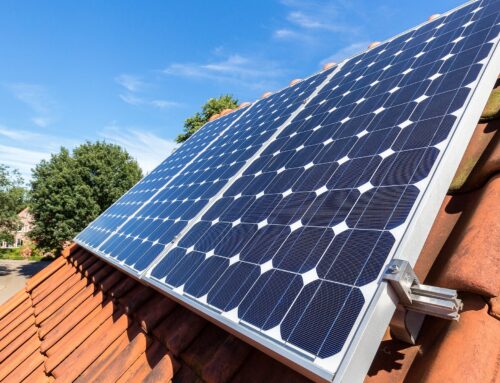Lower green energy prices hand Global South ‘the cheapest route to growth in history’
October 21, 2024
It’s often said that with climate change, the Global South is being asked to solve a problem it didn’t create. A new report suggests it may do just that.
Output of electricity generated by solar and wind power is growing faster in the vast region than in the Global North, says a new report from the Rocky Mountain Institute, known as RMI. Nearly two-thirds, or 61%, of the Global South “has passed the renewables tipping point,” RMI’s Powering Up The Global South report says.
A major factor behind the shift: China, which has already announced enough cleantech capacity to supply all of the demand of the Global South and invested more than $100 billion into cleantech around the world since 2023. China is home to nearly two-thirds of the world’s utility-scale solar and wind power, with 180 gigawatts of utility-scale solar and 159 gigawatts of wind power under construction.
A 50% plunge in prices for solar panels and batteries last year on oversupply from China has made the upfront cost of producing solar energy in the Global South now roughly equal to that of extracting fossil fuels, RMI says. By 2030, the region, home to six in 10 humans, is likely to quadruple its electricity generation from solar and wind, to more than 2,000 terawatts per year.
The region’s trajectory, the report adds, is “the cheapest route to growth in history.”
“We’re very excited about how suddenly the costs of Chinese solar have broken down to below the capital cost of a fossil alternative,” RMI’s Kingsmill Bond tells ImpactAlpha. “These cost falls are not yet factored into the way people are looking at this opportunity in the global South—this is new.”
‘Renewable superpower’
The Global South—Africa, Latin America, South Asia and Southeast Asia—accounts for just one-fifth of the planet’s fossil fuel production and reserves. Petrostates including Indonesia, Nigeria and Algeria supply just 5% of the Global South’s primary energy demand.
Meanwhile, the vastly diverse region holds 70% of the world’s potential for renewable energy. It’s home to half of the minerals, including copper, lithium, nickel and cobalt, needed for wind turbines, clean electricity and other green fuels.
The region “can be a renewable superpower,” says the report. It calls its current trajectory “the cheapest route to growth in history.”
Green market ‘sweet spot’
The market is ripe for the uptake.
“Three quarters of the Global South is in the sweet spot,” RMI says. Some 73% of the region meets four criteria that encourage cleantech adoption: people who are middle income or above; low energy demand per capita; fossil fuel importing or self-sufficient; and vast renewable potential. Energy demand per person in the region, where 685 million people have no electricity, is one-fifth that of the Global North.
Residents of the Global South use far less electricity than their neighbors in the North. Average energy demand per person in the region is only 32 gigajoules per year, one-fifth the amount in the Global North. Just over four in 10 people live in countries where electricity demand per person is below the global energy minimum.
While the region is a net importer of fossil fuels, its use of fossil fuels is expected to peak by 2030.
Clean capex
This year, 87% of corporate spending in the Global South on electricity generation will flow into clean energy, with Latin America the leader, at 93%. (Latin America has reached the same solar and wind penetration as China, but four years faster, the report notes.)
The International Energy Agency expects new solar and wind capacity in the Global South to skyrocket by 60% to 77 gigawatts. (One gigawatt can power roughly 750,000 homes.) Solar and wind generation has spiked 23% each year over the past 5 years, and now supplies 9% of the region’s electricity generation, only five years behind the Global North.
One fifth of the region, including Brazil, Morocco, Bangladesh, Egypt and Vietnam, has already overtaken the Global North in terms of the share of solar and wind used in electricity generation. “Clearly, we’re heading to 100%” of corporate spending on electricity going to clean energy by the end of the decade, Bond says.
Low-income countries and fossil fuel exporters including Ethiopia and Colombia aren’t yet part of the clean energy upswing, the report says. The remedies on the eve of the COP29 annual climate gathering in Baku, Azerbaijan, include domestic policies to encourage the adoption of cleantech and attract investment, catalytic and concessional finance, and technology transfer
(See, “Climate negotiators head to Baku to craft a financial architecture for the net-zero future”).
Bond says that around 61% of countries in the region have crossed the 5% threshold for renewables—the “tipping point” at which rapid adoption ensues. “It takes a very long time to get from, let’s say, 0.5% to 5%,” he says, “but once you get there, that growth happens quickly.”
Search
RECENT PRESS RELEASES
Related Post



